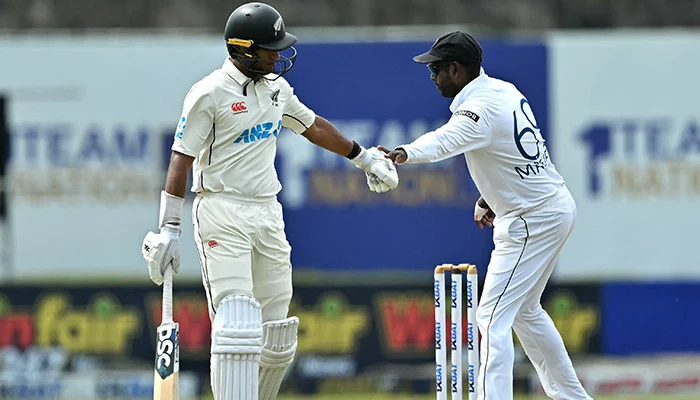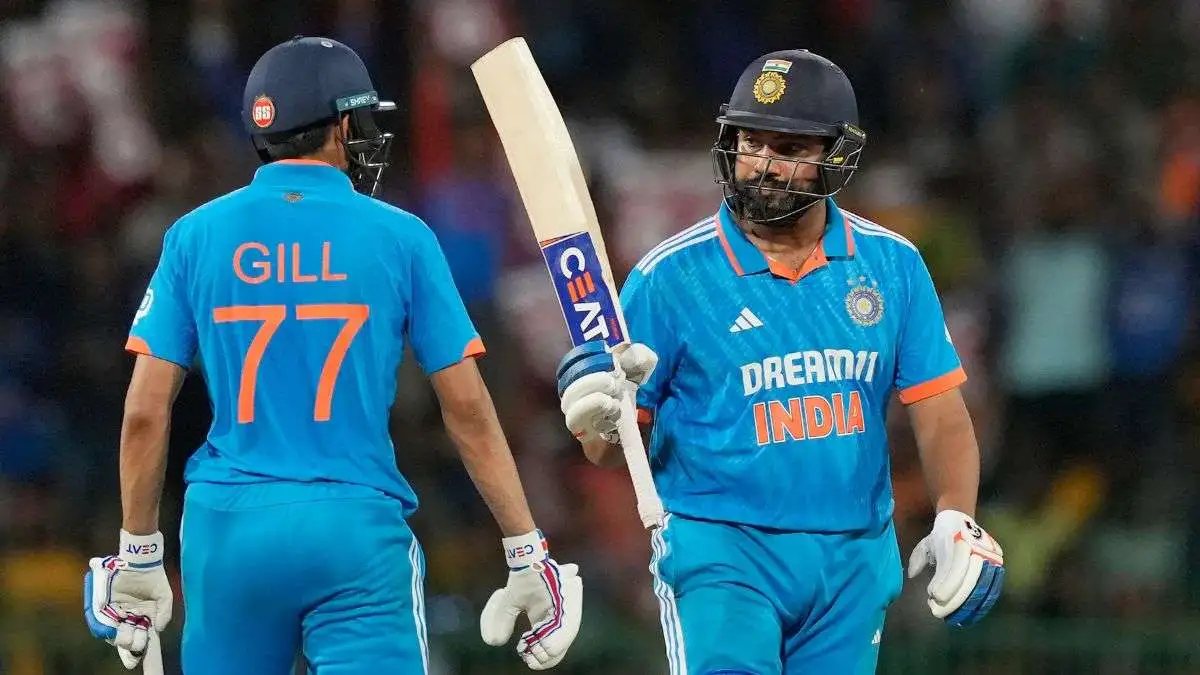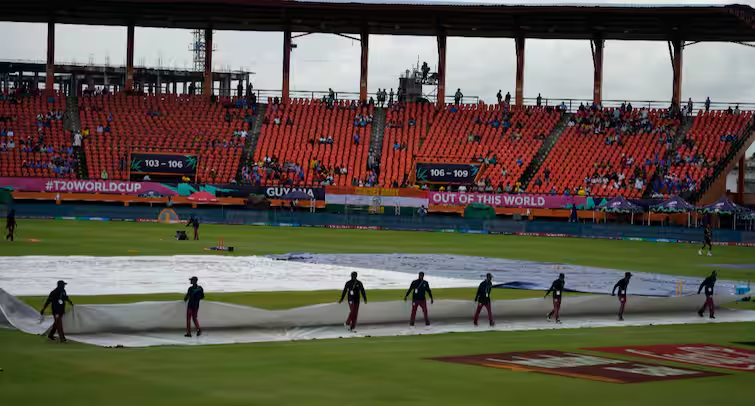
Most Runs in 5 Match Test Series Record-Breaking Stats
Don Bradman's staggering 974 runs in the 1930 Ashes series remains the most runs in
2025-04-22
Don Bradman's staggering 974 runs in the 1930 Ashes series remains the most runs in 5 match test series - a record that has stood unchallenged for over 90 years. While several batting legends have come close, notably Wally Hammond with 905 runs in the 1928-29 Ashes, no one has managed to surpass The Don's remarkable achievement. In fact, the list of highest runs in a test series features some of cricket's most illustrious names, from Viv Richards' explosive 829 runs in just 4 matches against England to Brian Lara's 798-run masterclass featuring his historic 375.
We've analyzed these extraordinary batting performances across different eras to bring you the definitive list of the 15 highest run-scorers in 5-match Test series. From Bradman's dominance to modern-day heroes like Yashasvi Jaiswal's recent 712-run feat against England, these achievements showcase the evolution of Test cricket's finest batting displays.
15 Most Runs In 5 Match Test Series
Don Bradman – 974 Runs (The Ashes, 1930)

Image Source: Inshorts
At just 21 years of age, Donald George Bradman rewrote cricket's record books during the 1930 Ashes tour of England. England entered the series as favorites, but Bradman's bat had other plans.
Don Bradman's 1930 Ashes dominance
The young Australian demolished England's bowling attack with unprecedented consistency, amassing 974 runs at an extraordinary average of 139.14. His sequence of scores tells the remarkable story: 8, 131, 254, 1, 334, 14, 232. Throughout the series, Bradman scored at approximately 40 runs per hour without hitting a single six.
Additionally, Bradman began the tour in spectacular fashion, becoming the fifth player and first Australian to reach 1,000 first-class runs by the end of May. His run-scoring was so prolific that sportswriters struggled to find new adjectives to describe his feats, essentially forcing a recalibration of cricket's sporting vocabulary.
Bradman's 334 at Headingley
Bradman's crowning achievement came in the third Test at Headingley. After reaching his century before lunch on the first day, he added another between lunch and tea, becoming the only Test player to pass 300 in a single day's play.
His eventual score of 334 came off 448 balls with 46 boundaries in 383 minutes. This innings broke Andy Sandham's world Test batting record of 325[42]. Bradman later reflected that despite its magnitude, he considered his 254 at Lord's the superior innings, noting there were "blemishes in strokeplay" in his triple century.
Impact of Bradman's runs on the series outcome
Bradman's performance transformed the series. His decisive double hundreds, particularly the 254 at Lord's and 232 at The Oval, helped Australia level and ultimately win the series.
Consequently, Bradman returned to Australia a national hero. The broadcasting of the series on radio further elevated his celebrity status. Beyond cricket glory, the tour brought Bradman financial success—his earnings reached approximately £5,000 through match payments, rewards, and publishing contracts.
Almost a century later, Bradman's 974 runs remains the benchmark for batting excellence, exceeding the second-best performance by 69 runs.
Wally Hammond – 905 Runs (The Ashes, 1928/29)

Image Source: Sportskeeda
The 1928-29 Ashes series in Australia witnessed Wally Hammond's emergence as England's batting colossus, setting what was then a world record for most runs in a test series. Playing in his maiden Ashes campaign at age 25, Hammond compiled a phenomenal 905 runs at an average of 113.12 across five Tests.
Wally Hammond's batting brilliance
Hammond's approach was methodical yet majestic. Prior to the series, he deliberately crafted a strategy to score primarily in the 'V' between extra cover and midwicket, eschewing the hook shot and largely avoiding the cut. This disciplined technique proved devastatingly effective, as he dominated Australian bowling throughout the summer. Significantly, his tally remained the highest test series aggregate until surpassed by Bradman the following year. Hammond's first-class record subsequently grew to include an astonishing 36 double-centuries and 167 centuries overall.
Hammond 251 and its significance
His 251 in Sydney represented his maiden Test century and stood as the second-highest Test score between England and Australia at that time. Subsequently, he followed this with an equally impressive 200 in Melbourne and then 119 not out and 177 in Adelaide. These consecutive masterclasses showcased his remarkable consistency and ability to construct monumental innings against quality bowling.
Series result and Hammond's legacy
England comprehensively overpowered Australia, winning the five-match series 4-1. Hammond's performances were described by Wisden as "a series of triumphs". After this breakthrough series, critics considered him possibly "the best batsman in the world". Nevertheless, his career would forever be measured against the emerging Don Bradman.
Hammond's batting transcended mere run accumulation. Standing tall and imposing at the crease, his cover-drive was widely admired for its technical perfection. Furthermore, his versatility extended beyond batting—he was a capable fast-medium bowler and exceptional slip fielder. His 85 Tests yielded 7,249 runs at an average of 58.45 with an impressive conversion rate, turning 22 of his 46 fifty-plus scores into centuries.
Mark Taylor – 839 Runs (Ashes, 1989)
After a mediocre start to his Test career, Mark Taylor announced himself on cricket's biggest stage during the 1989 Ashes tour of England, accumulating an astonishing 839 runs at an average of 83.90 across six Tests. This remarkable tally ranks third on the all-time list of most runs in a test series, behind only Bradman and Hammond.
Mark Taylor's consistency in 1989
Playing just his third Test match, Taylor displayed extraordinary consistency throughout the series with an impressive sequence of scores: 136, 60, 62, 27, 43, 51, 85, 37 not out, 219, 71, and 48. His batting marathon saw him occupy the crease for almost 38 hours – equivalent to more than six full playing days. Initially, Taylor made his mark in the first Test at Headingley where, after Australia was sent in on a suspect pitch, he batted through the entire first day to reach 96 not out. According to captain Allan Border, this crucial innings set the tone for Australian dominance in the series.
Taylor's 219 and opening stability
The pinnacle of Taylor's tour came at Trent Bridge during the fifth Test, where he and Geoff Marsh created history by becoming the first opening pair to bat throughout an entire day's play in a Test match in England. Moreover, their partnership reached 329 runs – the highest opening stand in Ashes history. Taylor went on to score 219, his maiden double century and the highest score in Ashes Tests in almost 25 years. Afterward, Australia declared at 602 for 6 and ultimately won by an innings and 180 runs.
Revival of Australian dominance
Taylor's performances played a decisive role in Australia's emphatic 4-0 series victory. Throughout the series, Australia was never dismissed for less than 400 runs. This triumph marked a turning point in Australian cricket history – before this series, Australia had won just one series and lost seven under Border's captaincy; immediately following it, they won eight and lost only two. Furthermore, Taylor's remarkable achievements earned him nomination as one of the five Wisden Cricketers of the Year in 1990.
6 Ball 6 Sixes Record List: Greatest Hits in Cricket History
Neil Harvey – 834 Runs (vs West Indies, 1952/53)

Image Source: The Cricket Panda
Young and fearless, Neil Harvey cemented his place in cricket lore by amassing 834 runs against the West Indies in the 1952/53 series. At just 24 years old, Harvey had already established himself as Australia's premier batsman following Don Bradman's retirement.
Neil Harvey's youthful brilliance
Compact yet powerful, Harvey brought an aggressive approach to Australian batting, simultaneously maintaining elegance and technical prowess. Throughout the series, Harvey averaged an extraordinary 92.66, continuing his remarkable record against touring teams. This performance came shortly after his South African dominance in 1949-50, where he had created several Australian records with 660 runs at an average of 132.00. His consistent run-scoring ability placed him as the natural successor to Bradman in Australia's batting hierarchy.
Harvey's 205 and strokeplay
The centerpiece of Harvey's series was his magnificent 205 at the Melbourne Cricket Ground, representing his highest Test score and third consecutive century. His innings showcased the full repertoire of shots that made him special—powerful pulls, authoritative drives, and precision square-cuts. Certainly one of cricket's fastest scorers, Harvey played all strokes with "utmost force", making even defensive shots sting fielders' hands. Although naturally inclined toward attacking cricket, Harvey could adapt to defensive situations when required, as demonstrated previously in Durban where he scored an unbeaten 151 to secure victory.
Australia's series win and Harvey's rise
Harvey's prolific run-making drove Australia to a commanding 4-1 series victory, firmly establishing his credentials as a match-winner. His aggregate of 834 runs surpassed Bradman's previous record of 806 runs against South Africa, highlighting Harvey's exceptional ability against top bowling attacks. Rather than merely accumulating runs, Harvey's elegance and "audacious shot-making" captivated audiences. His performances against both pace and spin proved decisive, as he continued building an impressive Test career that would eventually yield 21 centuries and a fine average of 48.42.
Viv Richards – 829 Runs (vs England, 1976)

Image Source: ESPNcricinfo
In the summer of 1976, Viv Richards transformed England's cricket grounds into personal batting arenas, compiling a colossal 829 runs in just four Tests at an extraordinary average of 118.42. This remarkable achievement was fueled by England captain Tony Greig's inflammatory pre-series comment about making the West Indies "grovel" – a statement that carried severe racial undertones given Greig's South African background.
Viv Richards' explosive 291 at The Oval
The pinnacle of Richards' dominance came in the final Test at The Oval where he crafted a magnificent 291, his highest Test score. This masterclass featured a staggering 38 boundaries as Richards methodically dismantled England's bowling attack. Reaching his half-century in just 87 minutes, Richards continued his assault for another 385 minutes, adding 240 more runs. Throughout this innings, Richards consistently unleashed his trademark flick shot around the front pad, hitting across the line with devastating effect.
Richards' average and strike rate
Throughout the series, Richards displayed remarkable consistency with scores of 232, 63, 4, 135, 66, 38 before his crowning 291. Even more impressively, he accomplished this feat despite missing the second Test due to illness. By series end, his Test average had skyrocketed from 31.40 to 64.14. His calendar year record was equally astounding – he finished 1976 with an incredible 1,710 runs, breaking Bob Simpson's 1964 record of 1,381 runs.
West Indies' dominance in the series
After drawing the first two Tests, West Indies emphatically won the remaining three to secure a 3-0 series victory. Richards' batting brilliance was complemented by a fearsome pace attack featuring four fast bowlers who could "play with greater intensity" through rotation. This series marked the beginning of West Indies' cricketing supremacy – they would go on to dominate England for years, winning six consecutive series against them. The triumph represented more than just cricket; it was a powerful statement against colonial attitudes, with Richards proudly wearing Rastafarian colors and considering his "bat as his sword".
Clive Walcott – 827 Runs (vs Australia, 1955)

Image Source: The Cricket Panda
Caribbean batting giant Clyde Walcott etched his name in cricket history during the 1955 series against Australia, amassing 827 runs at an impressive average of 82.70 across 10 innings. Despite Australia winning the series 3-0, Walcott's heroic performances showcased extraordinary resilience and batting prowess.
Walcott's middle-order consistency
Throughout the five-match series, Walcott established himself as the backbone of West Indies' middle order. His highest score of 155 exemplified his technical mastery and batting versatility. Walcott's defensive technique remained rock-solid, yet he never hesitated to unleash powerful strokes when opportunities arose. Indeed, his driving, cutting, and pulling were executed with tremendous power. Walcott found able support from fellow batting legends Weekes and Worrell, creating several substantial partnerships. Notably, in one instance, he built a steadfast 179-run partnership with Sobers, occupying the crease for three hours.
Five centuries in the series
Walcott's most remarkable achievement was becoming the first batsman in cricket history to score five centuries in a single Test series. This extraordinary feat still stands as both a West Indian and world record. Even more impressively, Walcott accomplished something never before seen in Test cricket by scoring centuries in both innings of two separate Tests within the same series. Whenever Australia's bowlers seemed to gain momentum, Walcott would invariably check their success with his determined batting.
Walcott's role despite series loss
However, Walcott's monumental batting efforts couldn't prevent the West Indies from losing the series. His contributions remained vital nonetheless, as he consistently rebuilt the innings whenever wickets fell. Throughout the series, Walcott offered minimal chances to the Australian bowlers – in one instance being let off when on 21 by Johnston, who injured his knee attempting the catch. After this reprieve, Walcott would typically bat for extensive periods, often staying at the crease for nearly five hours. Alongside Viv Richards and Gary Sobers, Walcott remains one of only three West Indians to score over 800 runs in a Test series, highlighting his place among cricket's elite.
Gary Sobers – 824 Runs (vs Pakistan, 1957/58)

Image Source: The Cricket Panda
In 1957-58, a 21-year-old Garfield Sobers showcased his extraordinary talent by scoring 824 runs against Pakistan at an exceptional average of 137.33. This remarkable achievement fell just three runs short of Clyde Walcott's West Indies record of 827 runs set against Australia in 1955.
Sobers' iconic 365* innings
The centerpiece of Sobers' series was his monumental 365 not out at Sabina Park, Kingston. Remarkably, this was Sobers' first Test century, making him the only player in Test history to convert his maiden hundred into a triple century. At 21 years and 216 days, he became the youngest player ever to break the individual Test scoring record, surpassing Len Hutton's 364 scored in 1938.
This batting masterclass lasted 614 minutes and contained 38 fours, one five, 6 threes, 30 twos, and 130 singles. Alongside Conrad Hunte (260), Sobers built a mammoth 446-run partnership for the second wicket – just five runs short of the then-Test record of 451 by Bradman and Ponsford.
Sobers' average and conversion rate
Evidently, Sobers' consistency throughout the series was extraordinary. After his record-breaking triple century, he continued his dominance by scoring centuries in both innings (125 and 109 not out) of the fourth Test. His batting was so prolific that he scored 1,007 runs across all matches against Pakistan that season, averaging 143.55.
Legacy of the highest Test score
Sobers' 365* stood as the highest individual Test score for 36 years until another West Indian prodigy, Brian Lara, surpassed it in 1994. Surprisingly, despite the magnitude of his achievement, this innings featured no sixes – unusual for such a large total.
The impact of Sobers' performance extended beyond mere numbers. Subsequently, it established him as a cornerstone of West Indies cricket, helping fill the gap left by the retirement of batting legends Walcott and Weekes. His breakthrough series marked the beginning of an illustrious career that would see him recognized as perhaps cricket's greatest all-rounder.
Don Bradman – 810 Runs (Ashes, 1936/37)

Image Source: Cricket Thrills
Unlike his record-breaking 1930 series, the 1936/37 Ashes presented Don Bradman with an entirely different challenge. Newly appointed as Australian captain, Bradman faced immense pressure after England convincingly won the first two Tests by 322 runs and an innings and 22 runs.
Bradman's comeback after 0-2 deficit
With criticism mounting and calls for his resignation, Bradman's response was defiant: "It would be sheer cowardice to abandon what appeared to be a sinking ship". His early batting struggles fueled speculation about his decline, scoring just 13 in the first innings of the third Test. The Australian press was ruthless, questioning not only his batting form but also his leadership abilities.
Bradman's 270 and series turnaround
At Melbourne, Bradman employed tactical brilliance by reversing the batting order when rain created a treacherous pitch. After England declared at 76 for nine in response to Australia's 200, Bradman protected his top batsmen by sending tailenders in first. Finally arriving at number seven with Australia at 97 for 5, Bradman crafted a masterful 270 runs. This seven-hour, 38-minute marathon – his longest Test innings ever – was later rated by Wisden as the greatest Test match innings of all time.
Along with Fingleton, Bradman established a sixth-wicket record of 346 runs – then the highest partnership for any wicket in Australia. Most remarkably, he accomplished this while suffering from influenza.
Leadership and resilience
In subsequent Tests, Bradman's dominance continued with scores of 212 and 169. Ultimately, Australia completed an extraordinary comeback, winning the series 3-2 – making them the only team in cricket history to win a five-match series after losing the first two Tests.
Bradman finished with 810 runs at an average of 90.00 across nine innings, the highest by any captain in an Ashes series. This performance silenced critics, with one journalist admitting, "We confess we were beginning to wonder whether Bradman had not lost touch... he has re-established himself as a batsman and, what was more important, he re-established Australian cricket".
Brian Lara – 798 Runs (vs England, 1993/94)

Image Source: The Cricket Panda
Brian Lara announced himself as cricket's newest superstar during the 1993-94 series against England, amassing 798 runs across 8 innings at a remarkable average of 99.75. This extraordinary batting display featured two centuries and two half-centuries as the southpaw dismantled England's bowling attack throughout the Caribbean.
Lara's record-breaking 375
The crowning jewel of Lara's series came in the final Test at Antigua where he crafted a monumental 375 runs, surpassing Sir Garfield Sobers' 36-year-old world record of 365. This historic innings lasted twelve and three-quarter hours, comprising 538 deliveries with 45 boundaries. Remarkably, Lara struck all his boundaries as fours, without hitting a single six.
Upon breaking Sobers' record, chaotic scenes erupted as fans rushed onto the field. Play halted for approximately seven minutes as police restrained the crowd. Specifically, Sir Garfield Sobers himself walked to the middle to congratulate Lara on claiming his record. Lara's 375 established a new record for most runs in boundaries (180) in an innings for West Indies, surpassing Rohan Kanhai's previous mark of 168.
Lara's flair and dominance
Throughout the series, Lara exhibited exceptional artistry and flair, becoming the focal point of West Indies' batting lineup. His extraordinary innings displayed his unique ability to dominate bowling attacks single-handedly. What made this achievement even more impressive was that Lara had almost missed playing in the series entirely.
West Indies' series win
Notwithstanding England entering as potential favorites, Lara's contributions propelled the West Indies to a convincing 3-1 series victory. His performance confirmed his emergence as one of cricket's pre-eminent batsmen. Alongside veterans like Desmond Haynes, Lara found support from fellow emerging talent Shivnarine Chanderpaul. Together with Jimmy Adams, Lara built a crucial 179-run partnership during his record innings.
This series effectively established Lara as the heir to West Indies' batting legacy, following in the footsteps of legends like Richards, Sobers, and Walcott – all fellow members of the exclusive club of batsmen who scored over 700 runs in a Test series.
Steve Smith – 774 Runs (Ashes, 2019)

Image Source: Hindustan Times
The 2019 Ashes showcased Steve Smith's extraordinary comeback to Test cricket, amassing 774 runs at a remarkable average of 110.57 in just seven innings. This performance stands as the fifth-highest individual score in Ashes history and the most prolific run-scoring display in a test series since the turn of the century.
Smith's return after ban
Following a 12-month suspension due to the ball-tampering scandal, Smith announced his return with twin centuries (144 and 142) in the first Test at Edgbaston, becoming the fifth Australian to score hundreds in both innings of an Ashes Test. His sequence of scores throughout the series proved his consistency:
By series end, Smith had joined the elite company of Don Bradman, Sunil Gavaskar, Everton Weekes, and Gary Sobers as the only batsmen to score over 700 runs in a Test series more than once.
Smith's 211 and mental strength
At Old Trafford, Smith crafted a masterful 211 in the fourth Test, his third Ashes double century. What made this achievement remarkable was that it came after missing the third Test due to concussion suffered when struck by a Jofra Archer bouncer at Lord's.
Albeit given reprieves when dropped by Archer on 65 and dismissed off a Jack Leach no-ball on 118, Smith capitalized magnificently. His technique against England's bowlers was outstanding – scoring 193 runs against Broad at a strike rate of 71, whereas his technique against Archer, though slower at 57.3 runs per 100 balls, proved impenetrable as Archer bowled 164 deliveries without dismissing him once.
Ashes retention and Smith's redemption
Smith's monumental contribution helped Australia retain the Ashes in England for the first time since 2001. Furthermore, his performance propelled Australia to a 2-1 series lead after winning the fourth Test, from which they secured a 2-2 draw.
Henceforth, Smith's statistical dominance became undeniable. His percentage contribution to Australia's total runs (35.5%) matched exactly what Bradman contributed in 1930. His control percentage of 85.7% topped all batsmen from both teams. Additionally, Smith reclaimed the world's No.1 Test batsman ranking from Virat Kohli, firmly establishing his redemption after the ball-tampering episode.
Sunil Gavaskar – 774 Runs (vs West Indies, 1970/71)

Image Source: Sportstar - The Hindu
The 1970-71 tour of West Indies marked the arrival of a 21-year-old batting prodigy whose debut series performance remains unmatched half a century later. Sunil Gavaskar amassed a staggering 774 runs in just 4 Tests at an extraordinary average of 154.80, establishing himself immediately as India's premier batsman.
Gavaskar's debut series heroics
After missing the first Test due to an injured finger, Gavaskar announced his arrival with elegant scores of 65 and 67 not out in the second Test at Port of Spain. His confident strokeplay helped India secure their first-ever Test victory against the West Indies in 25 attempts. Throughout the series, Gavaskar displayed remarkable concentration, often remaining unbeaten through long periods at the crease. His sequence of scores reflected his consistency: 65, 67*, 116, 64*, 1, 117*, 124, and 220.
Four centuries in debut series
Perhaps most impressively, Gavaskar struck four centuries, including a magnificent double hundred. In the third Test, he crafted his maiden Test century with a polished 116, even while battling excruciating toothache. At times facing legendary bowlers like Garry Sobers, Gavaskar remained undaunted, continuing his run-scoring spree with an unbeaten 117 in the fourth Test.
The pinnacle came in the fifth Test where Gavaskar produced back-to-back masterclasses – 124 in the first innings followed by a marathon 220 in the second. This remarkable achievement made him the second Indian to score centuries in both innings of a Test match and the only Indian to record a century and double-century in the same Test.
India's historic series win
Under Ajit Wadekar's leadership, India claimed their first-ever Test series victory against the West Indies. Furthermore, this was also India's first victory in the Caribbean. Gavaskar's prolific batting provided the foundation for this milestone achievement in Indian cricket history.
Accordingly, this debut series immediately established Gavaskar as a world-class batsman. To date, Yashasvi Jaiswal is the only Indian after Gavaskar to cross 700 runs in a Test series. Gavaskar's record of most runs by a debutant in a Test series for India still stands unchallenged.
Alastair Cook – 766 Runs (Ashes, 2010/11)

Image Source: ESPNcricinfo
Facing potential career uncertainty after struggling against Pakistan in 2010, Alastair Cook dramatically transformed his fortunes during the 2010/11 Ashes, accumulating 766 runs across just seven innings at a phenomenal average of 127.66. This remarkable tally stands as England's second-highest return in a single Ashes series.
Cook's 235* and batting marathon
The cornerstone of Cook's campaign came in Brisbane's opening Test where he crafted an unbeaten 235. This innings marked his maiden Test double-century and broke the record for the highest individual Test score at the Gabba. Meanwhile, his 10-hour, 25-minute occupation of the crease represented the longest an England batsman had ever batted in an innings in Australia.
Coupled with his first innings, Cook batted for more than 15 hours in the match – equivalent to 10 Premier League football matches. His resilience helped England recover from a 221-run first-innings deficit to post a mammoth 517-1.
Cook's average and match-saving knocks
Throughout the series, Cook maintained extraordinary consistency. After restoring his technique to its "default position", he registered centuries in Adelaide and Sydney, plus a vital 82 in Melbourne. Undoubtedly, his mental fortitude proved exceptional – he once remarked, "I hit the sweet spot of batting".
His record-breaking continued as he surpassed the England record for runs scored and minutes at the crease without dismissal: 371 runs in 1,022 minutes of play.
England's first Ashes win in Australia in 24 years
Cook's batting prowess catalyzed England's historic 3-1 series triumph – their first Ashes victory in Australia in 24 years. His performances in Adelaide, Melbourne, and Sydney all contributed to innings victories.
In addition to claiming Man of the Series honors, Cook earned Man of the Match for his 189 against Australia in the final Test. Reflecting afterward, he stated, "When I flew home from Australia I sat on the plane thinking there was nothing more I could have done on that tour. It was ultimate satisfaction".
Mudassar Nazar – 761 Runs (vs India, 1982/83)

Image Source: ScoreLine
Mudassar Nazar broke Pakistan's batting record during the 1982-83 series against India, accumulating 761 runs across eight innings at a phenomenal average of 126.83. This remarkable achievement surpassed Hanif Mohammad's previous Pakistani record of 628 runs against West Indies in 1957-58.
Mudassar's 231 and patience
The centerpiece of Mudassar's campaign was his monumental 231 runs in the fourth Test at Hyderabad. This innings displayed extraordinary patience as he occupied the crease for 627 minutes, facing 444 deliveries and striking 21 fours and a rare six. Throughout this marathon knock, Mudassar formed a pivotal partnership of 451 runs for the third wicket, which equaled the then-world record set by Bradman and Ponsford in 1934.
Beyond this double century, Mudassar demonstrated remarkable consistency, crafting three additional centuries – including scores of 152* against India at Lahore and 152 at Karachi. As an opener renowned for his durability at the crease, Mudassar's batting style perfectly complemented Pakistan's dominant bowling attack.
Pakistan's series win
At Hyderabad, Pakistan capitalized on Mudassar's batting masterclass to secure an overwhelming victory by an innings and 119 runs. By this point, Pakistan had established a commanding 3-0 lead in the six-match series. Imran Khan's bowling prowess perfectly complemented Mudassar's run-scoring, with the Pakistani captain taking his 200th Test wicket during this period.
Underrated but impactful performance
In particular, what makes Mudassar's achievement noteworthy is how his series total of 761 runs included four centuries against his "most favorite opponents". Above all, his performance remains one of the most prolific yet underappreciated batting displays in Test history. Hence, his series average of 126.83 stands among the highest ever recorded in extended series.
For context, Mudassar was already known for holding some unusual records – including scoring the slowest Test century (557 minutes) and being the first batsman dismissed for 199. Hence, this series transformed his reputation from merely a stubborn opener to a genuine match-winner whose batting prowess helped secure a definitive series victory against Pakistan's arch-rivals.
Joe Root – 737 Runs (vs India, 2021-22)

Image Source: myKhel
Joe Root joined the elite club of batsmen with 700+ runs in a Test series during the 2021-22 series against India, compiling 737 runs across 9 innings at a phenomenal average of 105.28. This remarkable achievement placed him alongside legends like Bradman, Gavaskar, and Smith as one of cricket's most prolific run-scorers in a single series.
Root's 180* and consistency
The centerpiece of Root's campaign was his magnificent 180 not out at Lord's. Throughout this flawless innings, Root offered no clear chances to India while displaying his trademark delicate technique - primarily composed of nudges, glances, and flicks through square leg. Only in the closing stages did he unveil more aggressive strokes, including a reverse ramp and slog sweep against Mohammed Siraj. His batting masterclass helped England establish a narrow first-innings lead despite beginning Day 3 in a precarious position.
Root maintained extraordinary consistency throughout the series with four centuries. His performance was particularly impressive considering England's heavy reliance on him, with one commentator describing him as "something of a one-man army for England lately".
Root's leadership under pressure
For the first four Tests, Root captained England while shouldering the bulk of their batting responsibilities. His leadership challenges were compounded by the absence of key players Ben Stokes (mental health issues) and Jofra Archer (elbow injury). At one point, Root surpassed Alastair Cook to become England's highest run-scorer in international cricket.
England's fightback in tough conditions
The series culminated with England achieving their highest successful run chase in Test history. In the COVID-delayed fifth Test at Edgbaston, Root crafted an unbeaten 142 to guide England to a target of 378-3 alongside Yorkshire teammate Jonny Bairstow. This seven-wicket victory leveled the five-match series at 2-2.
Root's extraordinary batting earned him Player of the Series honors, with the commentator noting his "737 runs at 105.28, with four hundreds is out of this world". Impressively, Root joined a select group of England batsmen, as only four others have scored more runs in a series during Test cricket's 145-year history.
Graham Gooch – 752 Runs (vs India, 1990)

Image Source: Cricket n More
At Lord's Cricket Ground in 1990, Graham Gooch delivered one of cricket's greatest batting exhibitions, accumulating 752 runs at an extraordinary average of 125.33 across the three-Test series against India. His performance ranks among the finest in Test cricket history, demonstrating remarkable consistency throughout all six innings.
Gooch's 333 and 123 in same match
The cornerstone of Gooch's series was his extraordinary performance in the first Test at Lord's. His first innings 333 stood as the sixth highest individual score in Test history at that time. This batting masterclass lasted 628 minutes and required 485 balls, featuring 43 boundaries and 3 sixes. Impressively, after this marathon innings, Gooch returned in England's second innings to smash 123 from just 113 balls.
As a result, Gooch's match aggregate of 456 runs set a world record for most runs by a player in a single Test match, eclipsing Greg Chappell's previous record of 380. At this point in his career, Gooch demonstrated extraordinary stamina by spending nearly two full days at the crease across both innings.
Gooch's fitness and technique
Beneath Gooch's performance lay exceptional physical preparation. His countless training runs around Chelmsford had built remarkable endurance. Technically, Gooch had specifically practiced sweeping against local spinners before the series, which proved decisive against India's bowling attack.
Given these points, Gooch's technique was particularly effective against spinners Maninder Singh and Ravi Shastri. His partnership with Allan Lamb yielded 308 runs, establishing an England record against India.
England's series win and Gooch's peak
The first Test victory, driven by Gooch's heroics, propelled England to a 1-0 series triumph. England's total of 653-4 marked their highest ever score against India.
Remarkably, Gooch became only the second player in Test history (until 2014 when Kumar Sangakkara joined this exclusive club) to score a triple century and a century in the same Test match. Throughout the series, Gooch demonstrated consistent dominance, with his form reflecting his peak years as England captain. His batting average as captain (58.6) was nearly double his average when not leading the team.
Comparison Table
|
Player |
Total Runs |
Series/Opposition |
Year |
Average |
Highest Score |
Centuries |
Series Result |
|
Don Bradman |
974 |
The Ashes |
1930 |
139.14 |
334 |
4 |
Australia won |
|
Wally Hammond |
905 |
The Ashes |
1928/29 |
113.12 |
251 |
4 |
England won 4-1 |
|
Mark Taylor |
839 |
The Ashes |
1989 |
83.90 |
219 |
2 |
Australia won 4-0 |
|
Neil Harvey |
834 |
vs West Indies |
1952/53 |
92.66 |
205 |
3 |
Australia won 4-1 |
|
Viv Richards |
829 |
vs England |
1976 |
118.42 |
291 |
3 |
West Indies won 3-0 |
|
Clive Walcott |
827 |
vs Australia |
1955 |
82.70 |
155 |
5 |
Australia won 3-0 |
|
Gary Sobers |
824 |
vs Pakistan |
1957/58 |
137.33 |
365* |
3 |
Not mentioned |
|
Don Bradman |
810 |
The Ashes |
1936/37 |
90.00 |
270 |
3 |
Australia won 3-2 |
|
Brian Lara |
798 |
vs England |
1993/94 |
99.75 |
375 |
2 |
West Indies won 3-1 |
|
Steve Smith |
774 |
The Ashes |
2019 |
110.57 |
211 |
3 |
Draw 2-2 |
|
Sunil Gavaskar |
774 |
vs West Indies |
1970/71 |
154.80 |
220 |
4 |
India won |
|
Alastair Cook |
766 |
The Ashes |
2010/11 |
127.66 |
235* |
3 |
England won 3-1 |
|
Mudassar Nazar |
761 |
vs India |
1982/83 |
126.83 |
231 |
4 |
Pakistan won |
|
Joe Root |
737 |
vs India |
2021-22 |
105.28 |
180* |
4 |
Draw 2-2 |
|
Graham Gooch |
752 |
vs India |
1990 |
125.33 |
333 |
Not mentioned |
England won 1-0 |
Conclusion
These extraordinary batting performances across nine decades showcase cricket's finest achievements at the highest level. Certainly, Don Bradman's phenomenal 974 runs in 1930 stands tall as an unmatched feat, while modern greats like Steve Smith and Joe Root have proven their mettle with 700+ run series in challenging conditions.
Test cricket's evolution becomes evident through these performances - from Bradman's classical dominance to Viv Richards' aggressive 829-run masterclass, and Brian Lara's record-breaking 375. Each era brought its unique challenges, yet these batting giants found ways to overcome them through technical excellence and mental fortitude.
Undoubtedly, these achievements carried massive impact beyond personal milestones. Many series-defining performances directly influenced historic victories - Gavaskar's 774 runs securing India's first series win in West Indies, Cook's 766 runs helping England claim their first Ashes in Australia in 24 years, and Smith's comeback series restoring his legacy after controversy.
Above all, these batting marathons represent the pinnacle of cricket's longest format, demanding exceptional skill, concentration and physical endurance. Their rarity - just 15 instances of 700+ runs in 145 years of Test cricket - cements their place among sport's greatest individual achievements.
FAQs Most Runs In 5 Match Test Series
Q1. Who holds the record for most runs scored in a 5-match Test series?
Don Bradman holds the record with 974 runs scored during the 1930 Ashes series against England.
Q2. How many centuries did Clive Walcott score in his 827-run series against Australia?
Clive Walcott scored five centuries during the 1955 series against Australia, becoming the first batsman in cricket history to score five centuries in a single Test series.
Q3. Which modern batsman has come closest to Bradman's 974-run record?
Steve Smith scored 774 runs during the 2019 Ashes series, the highest run tally in a Test series since the turn of the century.
Q4. Who holds the record for most runs in a single Test match?
Graham Gooch holds this record, scoring 456 runs (333 and 123) against India at Lord's in 1990.
Q5. Has any batsman scored over 700 runs in a series more than once?
Yes, Don Bradman achieved this feat twice, scoring 974 runs in 1930 and 810 runs in 1936/37, both during Ashes series.









